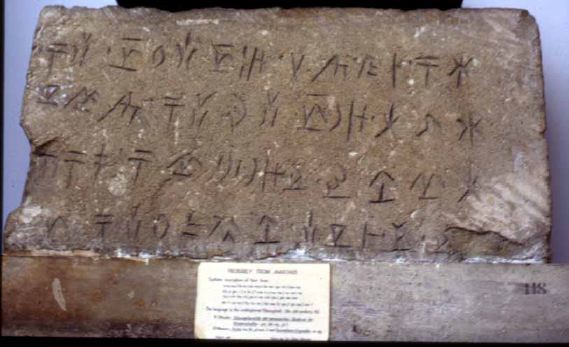
Hittite
Rule in Cyprus
During
the period between 1,500-1050 B.C. the rival Hittite and
Egyptian empires exercised authority over the rulers of the
Cypriot cities.
Writing, in the
form of a linear script known as Cypro-Minoan, was borrowed from
Crete. Cypriot craftsmen were distinguished for fine jewelry,
ivory-carving, and bronze figures.

Cypriot
syllabic inscription The tablet conserved
at the British Museum, London. Although deciphered,
the interpretation of the inscriptions remain a mystery.
This ancient
non-Greek, non-alphabetic inscriptions are of tremendous
importance. While the earliest examples, which date from as
early as 1500 BC, can't be read, comparisons clearly show that
the Cypriot syllabary seemed to have derived from Linear A, and
so sort of like a sibling to Linear
B.
The first readable texts in this system came after the
Greek settlers of the 12th century BC, and its use persisted
into Classical times. It was only through the extensive Hellenisation of Alexander the Great that this script was
finally abandoned.
The Cypriot
Syllabary. Note, /j/ is really /y/.

References
-
B. Rogerson
(1994), Cyprus, Cadogan, London.
-
Ancient
scripts, University of Berkeley, CA, USA.
